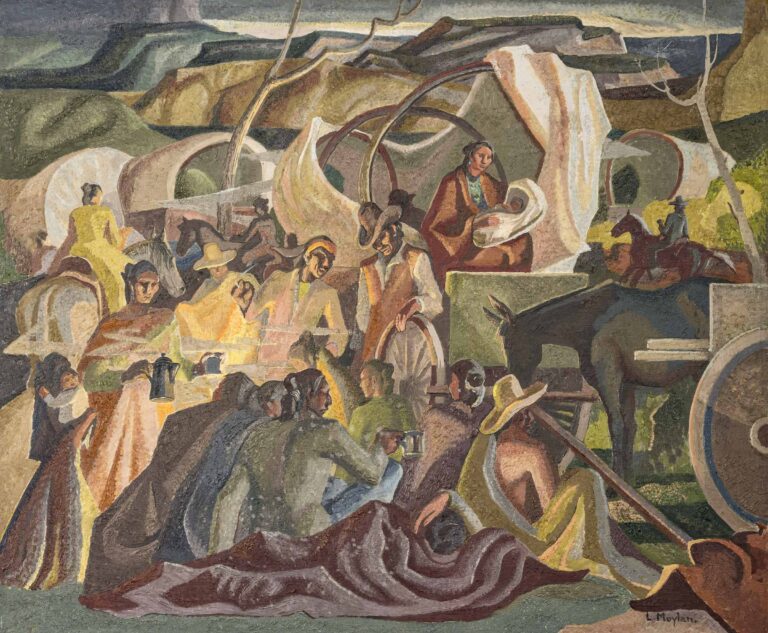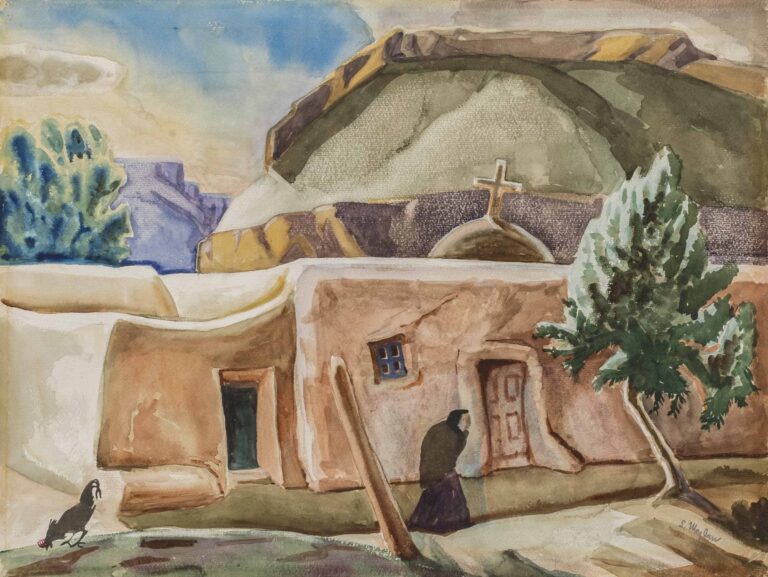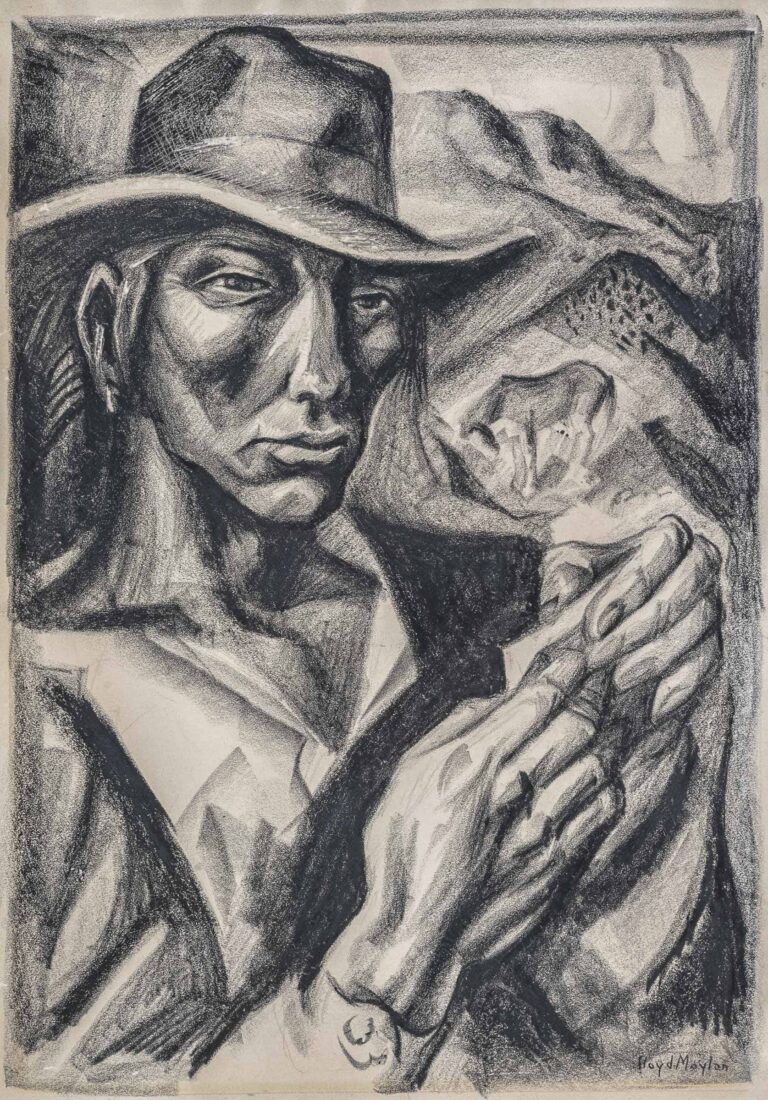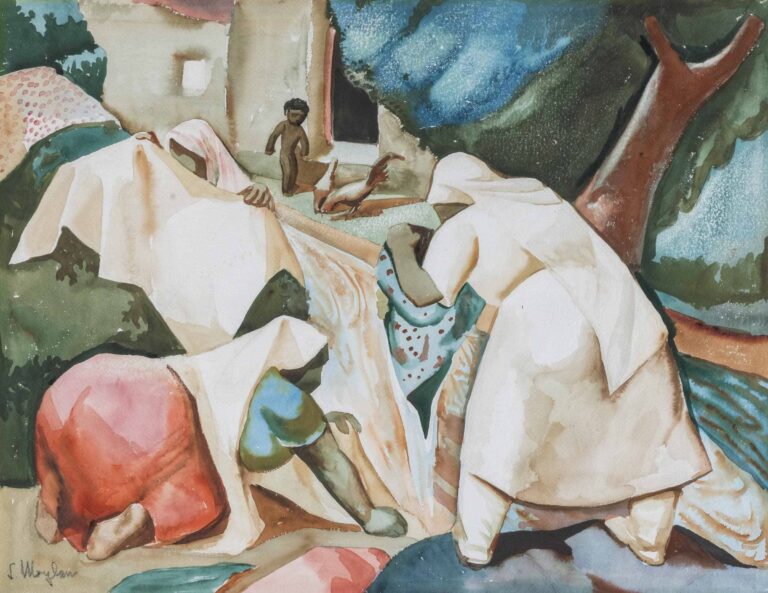Prelude to Dust pictures a Diné (Navajo) family grouping—a man, two women, and two children—huddled together with their animals against the wind. The force of the gale is shown through the billowing wagon bonnet, the man’s up-turned hat brim, the tipped-over coffee pot, and the blown-back hair of both the women and their horse. The streaks of line and color in the sky above and the valley below add to the windswept effect. The painting captures a defining feature of life in northwest New Mexico, “high wind events,” and speaks to Lloyd Moylan’s close study of the area and its inhabitants, which distinguished him among contemporaries in Western American art during his career.
Moylan occasionally created variations on a theme, and Prelude to Dust is an interesting parallel to From Shiprock to Shonto (also made in 1942) in the University of Arizona Museum of Art collection. From Shiprock to Shonto portrays the same or a similar family, again contending with extreme gusts as they journey across the high desert of the Navajo Nation. Though not entirely accurately depicted, the titanic rock formation in the background of Prelude to Dust may also be that of Shiprock.




















